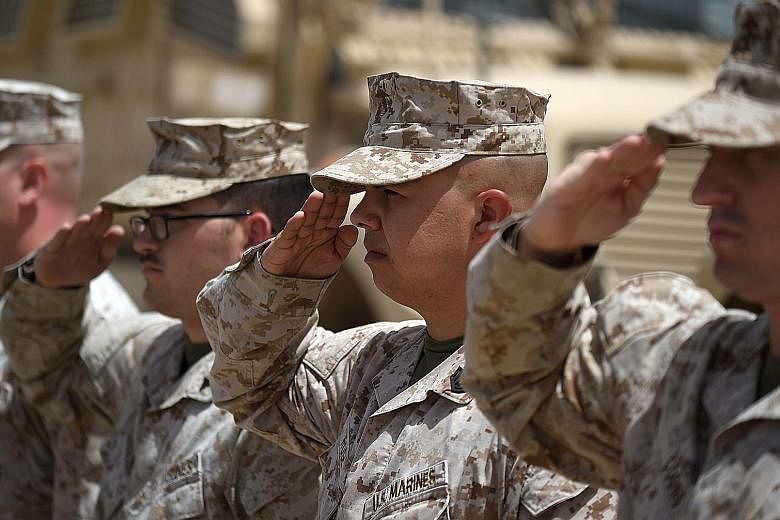WASHINGTON • President Donald Trump has given the Pentagon new authority to decide the troop levels in Afghanistan, a US official has said. The move could lead to a deployment of thousands more troops as commanders decide the way forward in the now 15-year-old war.
The US official, who spoke on condition of anonymity, on Tuesday said the move is similar to the April decision that gave the Pentagon more authority to set troop levels in Iraq and Syria. The change, the Pentagon said, was so that units could deploy at their proper strength to better maintain unit cohesion.
With the new authority, Secretary of Defence Jim Mattis could authorise deployment of additional troops to Afghanistan.
General John Nicholson, commander of US forces in Afghanistan, and his direct superior, head of US Central Command, General Joseph Votel, have both made cases for sending a "few thousand" more troops. These forces would help the fledgling Afghan military regain parts of the country that have fallen to the Taleban since US forces ended their combat mission there in 2014.
The White House decision came the same day that Mr Mattis told lawmakers on the Senate Armed Services Committee "we are not winning" in Afghanistan. He said the Taleban was surging throughout the country, and he planned to present lawmakers with a strategy for the US' longest running war by mid-July.
An incensed chairman of the committee, Senator John McCain, said: "We can't keep going like this. We know what the strategy was for the last eight years: Don't lose. That hasn't worked."
When asked what "winning looks like", Mr Mattis replied that it would mean a long-term US presence and Afghan security forces that were capable enough to control violence at local levels.
"It's going to be an era of frequent skirmishing and it's going to require a change in our approach from the last several years if we're to get it to that position," Mr Mattis said.
In the short term, Mr Mattis and the chairman of the Joint Chiefs of Staff, General Joseph Dunford, said extra US troops sent to the country would provide more fire and air support to the Afghans. Airstrike and artillery, they reasoned, would give the Afghan forces breathing room to build a more effective force.
In the first eight months of 2016, Afghan forces suffered 15,000 casualties including more than 5,000 killed. Recruiting efforts have been barely able to keep the Afghan security forces from maintaining their current ranks, let alone growing to a size large and capable enough to project security in the country.
There are around 8,400 US troops in Afghanistan and roughly 5,000 more Nato forces. More than 2,000 US troops have died there since 2001.
WASHINGTON POST


